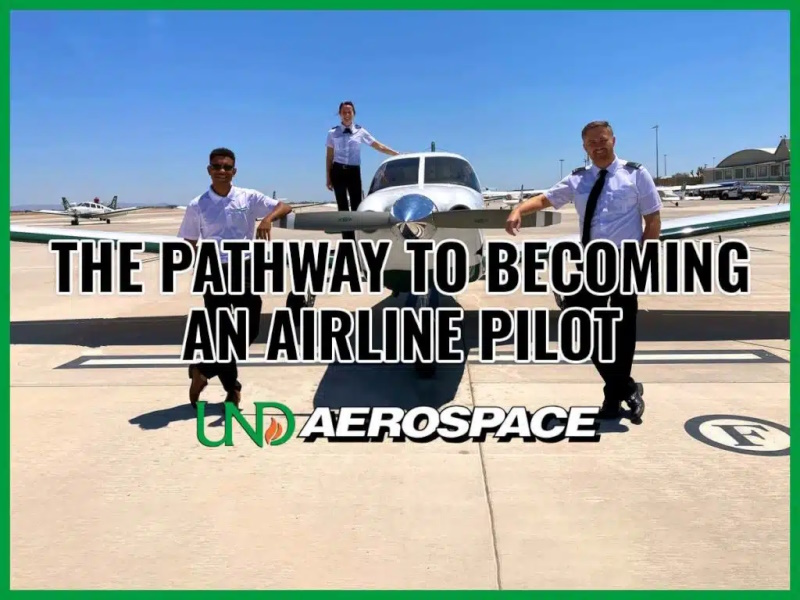The Pathway to Becoming an Airline Pilot
Do you want to be an airline pilot? You're not alone. It's a dream shared by millions of people around the world. The life of an airline pilot is an incredibly rewarding one, full of adventure, excitement, and great responsibility. But becoming an airline pilot is no easy feat. It requires months of training and experience before you're ready to take the control of an airliner carrying passengers. But if you're dedicated and willing to put in the time and effort, a career as an airline pilot is worth the effort and sacrifice.
What Does an Airline Pilot Do?
First, it's important to understand exactly what the job of an airline pilot entails. Essentially, as an airline pilot you will be responsible for flying passengers from one destination to another. This means that you will need to know how to operate the aircraft safely and efficiently in all kinds of different weather conditions and situations. You will also need to be able to communicate effectively with air traffic controllers and deal with the stress and technical challenges that come with flying a plane.
What it Takes to Become an Airline Pilot
Get Your Private Pilot License (PPL)
The first step on your journey to becoming an airline pilot is to obtain your Private Pilot License (PPL). This typically involves enrolling in a pilot training program at an accredited flight school like the UND Aerospace Foundation, where you will receive the necessary theoretical knowledge and practical training needed to safely operate a plane.
To get your private pilot certification, you'll need to log at least 40 hours of supervised and solo flying, including day and night flying, flight maneuvers, and cross-country flying. You'll also need to pass a written exam and a practical flight test. Once you have obtained your PPL, you're one step closer to your goal!
Get Your Instrument Rating and Commercial Pilot License (CPL)
The next step is to get an Instrument Rating and Commercial Pilot License (CPL). These are two different certifications, but they can be administered concurrently, which saves you time and money in the long run. To obtain your instrument rating, you will need to undergo training on flying a plane using only the instruments in the cockpit rather than relying on visual references. This includes flying using radio navigation aids and advanced radar technology under different conditions. You'll need to pass a written exam and practical flight test with an FAA examiner.
For the commercial pilot certification, you will need to log at least 250 hours of flight time, including cross-country flying, instrument training, and night flying. You'll also need to pass a written exam and practical flight test with an FAA examiner. With a commercial pilot license, you are eligible to fly for compensation or hire, so you can start building the flight hours and experience necessary to apply for an airline pilot position. Some of the industries that readily hire commercial pilots include flight training schools hiring flight instructors, air taxi, agriculture and crop dusting, charter services, cargo delivery, pipeline patrol, aerial surveying, and search and rescue.
Add a Multi-Engine Commercial Pilot Rating
Another important prerequisite to becoming an airline pilot and adding to your marketability as a pilot is obtaining a Multi-Engine Rating. This will allow you to fly larger, multi-engine planes as the pilot-in-command (PIC). To get your multi-engine rating, you'll be required to take additional ground training and flight hours in a multi-engine aircraft.
Become a Flight Instructor Certificate
Although a flight instructor certificate is not a requirement to become an airline pilot, it is a great way to build your flight hours and experience as a pilot. It is also a very desirable qualification to add to your resume as you progress through your path to becoming an airline transport pilot.
Obtain an Airline Transport License
An airline transport license is the highest certificate you can obtain as a pilot and is a requirement to become an airline pilot. To apply for the Airline Transport Pilot (ATP) license, you'll need to complete 1,500 flight hours, including 250 hours as a pilot-in-command, 500 hours of cross-country flying, 100 hours of night time flying, and 75 of instrument time. As noted, these can be achieved by flying commercial airplanes or through flight instruction.
Get Started on Your Journey to Becoming an Airline Pilot
At the UND Aerospace Foundation Flight School, we offer a range of training programs that will take you from zero flight experience to a qualified commercial pilot, ready to take on the exciting world of aviation. Our programs are designed to fit your schedule and meet your budget, including financial aid options, while providing you with quality training that builds the skills and confidence required for a career in aviation.
Our team of certified flight instructors, state-of-the-art facilities, and modern fleet of aircraft offer a one-of-a-kind flight training experience and our graduates are highly sought after by airlines and aerospace companies across the globe for their unmatched qualifications and experience. Contact us at the UND Phoenix Flight Training Center today and let us get you started on the path to becoming a professional airline pilot.

